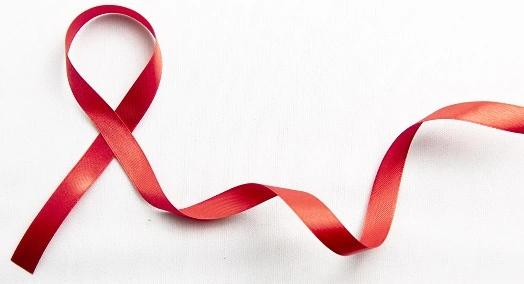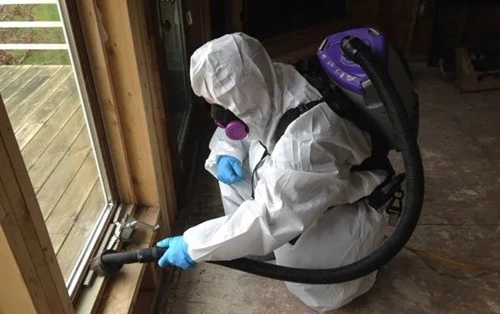We have made exceptional progress in the battle against HIV/AIDS over the past few years. However, the epidemic remains a significant global health challenge, with millions of people still affected worldwide. Among the factors contributing to the ongoing epidemic are stigma and discrimination surrounding HIV/AIDS, which pose serious barriers to effective prevention and treatment. This blog will explore the ways in which stigma and discrimination impact access to a home HIV test, HIV blood test, and treatment services, as well as the mental health and well-being of HIV affected people.
Understanding Stigma and Discrimination Related to HIV/AIDS
When it comes to HIV prevention and treatment, stigma and discrimination are major issues. It starts with the surrounding cultural attitudes. For example, people may still be uninformed about what it means to live with HIV or even hold erroneous beliefs that it’s a “death sentence.” Others may fear contracting the virus or hold biased opinions about those living with it, further perpetuating negative stereotypes. All of this creates an environment where those living with the virus may feel ostracised, discriminated against, or even ashamed of their diagnosis.
And this social stigma can have a direct impact on how easy (or difficult) it is to access preventive services and treatments. For example, those who fear judgement from their families, peers, medical professionals, or community may be less inclined to get a home HIV test or pursue available treatments. Which, in turn, could lead to increased risk of new infections or relapse into illness.
It could also contribute to high rates of mental health issues among people living with HIV due to feelings of alienation, hopelessness, guilt, and shame. Additionally, many individuals have limited financial options when obtaining preventative care such as medication and counselling due to insurance exclusions based on their diagnosis. And sadly, this dearth of necessary resources has often led to poorer health outcomes along racial lines as well.
The Impact of Stigma and Discrimination on HIV Prevention
Stigma and discrimination create a multitude of obstacles in the realm of HIV prevention. Fear of judgement, social isolation, and confidentiality concerns can deter individuals from seeking a home HIV test and HIV blood test. This is particularly concerning because a home HIV test or an HIV blood test is crucial for initiating treatment and preventing further transmission of the virus.
Furthermore, stigma and discrimination can hinder efforts to promote safer sexual practices and HIV education. The stigmatisation of certain behaviours and populations may lead to a reluctance to discuss HIV and sexual health openly, which can perpetuate misconceptions and limit access to accurate information. This, in turn, can contribute to increased risk-taking behaviours and reduced use of prevention strategies, such as condoms or pre-exposure prophylaxis (PrEP).
Additionally, the negative effects of stigma and discrimination can extend to funding and policy support for HIV prevention initiatives. Misallocation of resources and reluctance to prioritise HIV prevention efforts can result from societal stigma and misunderstandings about the disease, further exacerbating the epidemic.
The Impact of Stigma and Discrimination on HIV Treatment
Stigma and discrimination also present significant barriers to accessing and adhering to antiretroviral therapy (ART), the primary form of treatment for HIV. Fear of disclosure and social consequences may prevent individuals living with HIV from seeking or continuing treatment, while discrimination within healthcare settings can discourage them from engaging with providers and following prescribed treatment regimens.
Moreover, stigma and discrimination can have severe consequences for the mental health of people living with HIV. Internalised stigma and self-stigma may lead to feelings of worthlessness, shame, and guilt. As a result, individuals living with HIV may experience increased rates of depression, anxiety, and suicidality. These mental health challenges can further hinder treatment adherence and overall health outcomes.
The effects of stigma and discrimination on the health and well-being of HIV affected people are far-reaching. Lower treatment adherence and viral suppression can result in poorer health outcomes, increased risk of comorbidities, and reduced life expectancy. In this way, stigma and discrimination not only impede HIV prevention but also contribute to the continued suffering of those living with the disease.
Strategies to Combat Stigma and Discrimination
Given the substantial impact of stigma and discrimination on HIV prevention and treatment, it is imperative to develop and implement strategies to address these challenges. One such strategy is HIV/AIDS education and awareness campaigns, which can help dispel myths and misconceptions about the disease while promoting empathy and understanding.
By providing accurate information and sharing personal stories of those affected by HIV, these campaigns can contribute to breaking down stereotypes and reducing stigma. Additionally, they can create a more supportive environment for open discussions about HIV and sexual health, which can facilitate prevention efforts and encourage people living with HIV to seek and adhere to treatment.
Legal and policy interventions also play a crucial role in combating stigma and discrimination. Implementing anti-discrimination laws and protections can help ensure that people living with HIV get treated fairly and without prejudice in various aspects of life, such as employment, housing, and access to healthcare services.
Moreover, strong policy support for getting a home HIV test, HIV prevention and treatment initiatives, including funding and resource allocation, can contribute to reducing the overall impact of stigma and discrimination on the HIV epidemic.
Empowering and supporting people living with HIV is another essential strategy for addressing stigma and discrimination. Peer-led support groups and networks can provide a safe shelter for people to share their experiences, offer emotional support, and exchange practical advice for managing their condition.
These groups can also encourage self-advocacy and resilience among people living with HIV, enabling them to better navigate the challenges posed by stigma and discrimination. Furthermore, such networks can serve as a platform for collective action and advocacy, promoting policy change and raising awareness about the realities of living with HIV.
Conclusion
Addressing stigma and discrimination is critical to ending the HIV epidemic. By creating an inclusive and supportive environment for people living with HIV, we can improve access to prevention and treatment services, enhance mental health and well-being, and ultimately save lives. It is essential for communities, individuals, and governments to work together in combating stigma and discrimination and promoting HIV prevention and treatment access. Through education, policy reform, and empowerment, we can create a more just and equitable world for all those affected by HIV/AIDS.
Think you or someone you know might need an HIV blood test? Book an HIV blood test immediately!


